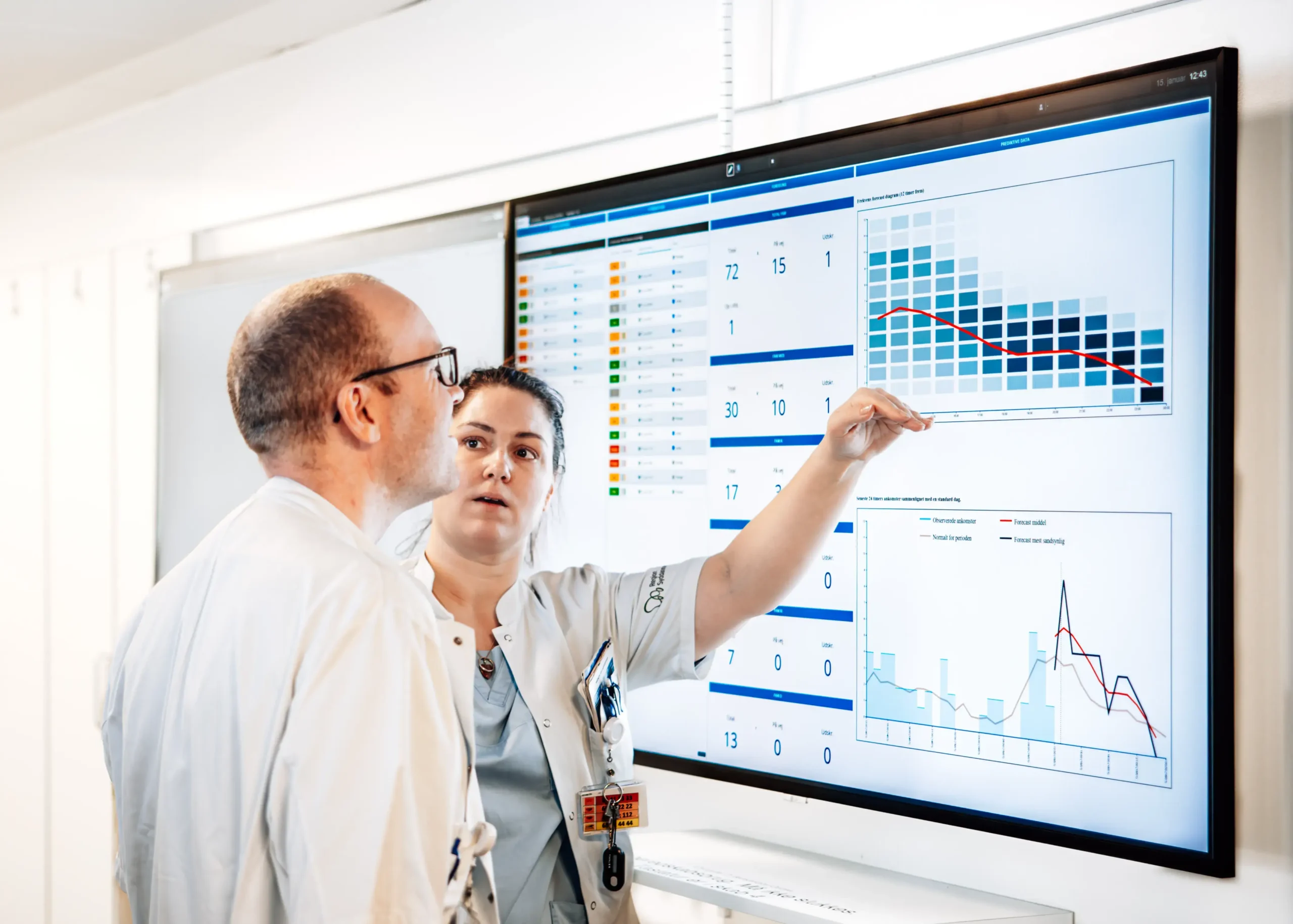Do you need to know when the rush will hit? Our advanced prediction system forecasts the number of incoming patients, allowing you to plan better and act in time.
Praemostro originated from a research project at Odense University Hospital. Today, we are an independent company helping you optimize resources and create a more stable daily workflow. We call it “From chaos to control.”
Want to stay ahead?
Explore our prediction solutions below.


The Sky's The Limit
Using artificial intelligence (AI) our computers can calculate the number of incoming patients – from several hours to several months into the future. Of course, the closer the horizon, the better the forecast.
Since August 2022, our system has been running 24/7 at one of the biggest Accident and Emergency Departments in Denmark, helping to predict the number of patients that can be expected in the next 12 hours. And we hit the mark – accurately – every time. In fact, we hit it so accurately that our predictions are within +/- one patient an hour.
However, it’s not just the A&E Departments that can use our system. It can be used in many other contexts in the healthcare system and in the long-term, it can also be used in other sectors – for example, at restaurants, cafés, supermarkets, etc.
Are you interested in hearing more or finding out if we can help you?
We solve real problems
Our technical system is specifically developed to find patterns in data and use them to predict how busy things will get in the future.
Using information about how busy things usually are, what’s happening in the community, prevailing weather conditions and multiple other sources, we work out whether there’s about to be a rush.
It might just sound too good to be true – but we can prove that we are right!
Since August 2022, our system has been running at a large Danish university hospital, which has one of the biggest and most complex Accident and Emergency Departments in Denmark – and we are hitting the mark. In fact, it’s so accurate that the system is currently integrated into the hospital’s daily operations and is used by multiple staff groups for planning their days. The same is true in multiple departments across the Danish healthcare system.
For example, if staff call in sick, the system is used to assess whether or not other staff need to be called in from their days off. And if it gets busy, the system is used to assess whether the rush will be brief and whether the staff present can handle the work for the day or if the rush will be a longer period of busyness, meaning extra resources will need to be called in to ensure that staff can carry out the work safely for the patients.
